Medieval hairstyles didn’t have a lot of variety, as religion and social status ruled every aspect of people’s lives, from what they ate to how they dressed.
For example, women could wear their hair long and loose before marriage. Once they said, “I do,” social norms required that they cover their hair in public, unveiling it only in the presence of their husband.
But that doesn’t mean all medieval haircuts were staid, as many were both beautiful and elaborate. Let’s take a peek into this fascinating part of history and explore the period’s hairstyles, accessories, and hygiene.
What Is the Medieval Era?
The Medieval Era, also known as the ‘Middle Ages‘, spans from the 5th to the 15th centuries. This period marks European history between the fall of the Western Roman Empire and the start of the Renaissance.
Historians often divide this era into three parts. They are the Early Middle Ages, the High Middle Ages, and the Late Middle Ages.
During this time, Christianity spread across Europe. Powerful kingdoms and empires formed. Feudalism developed as a societal structure. The Crusades happened. The Black Death struck Europe. Art and literature saw major advancements.
This period evokes images of knights and castles. Gothic architecture also emerged during the Middle Ages.
Timeline of Medieval Haircuts and Hairstyles
When it came to medieval hairstyles, the focus was less on the actual tresses and more on the accessories used to dress them up. Throughout the nearly 1000-year Middle Age era, some common hairstyling themes spanned the ages.
Early Middle Ages
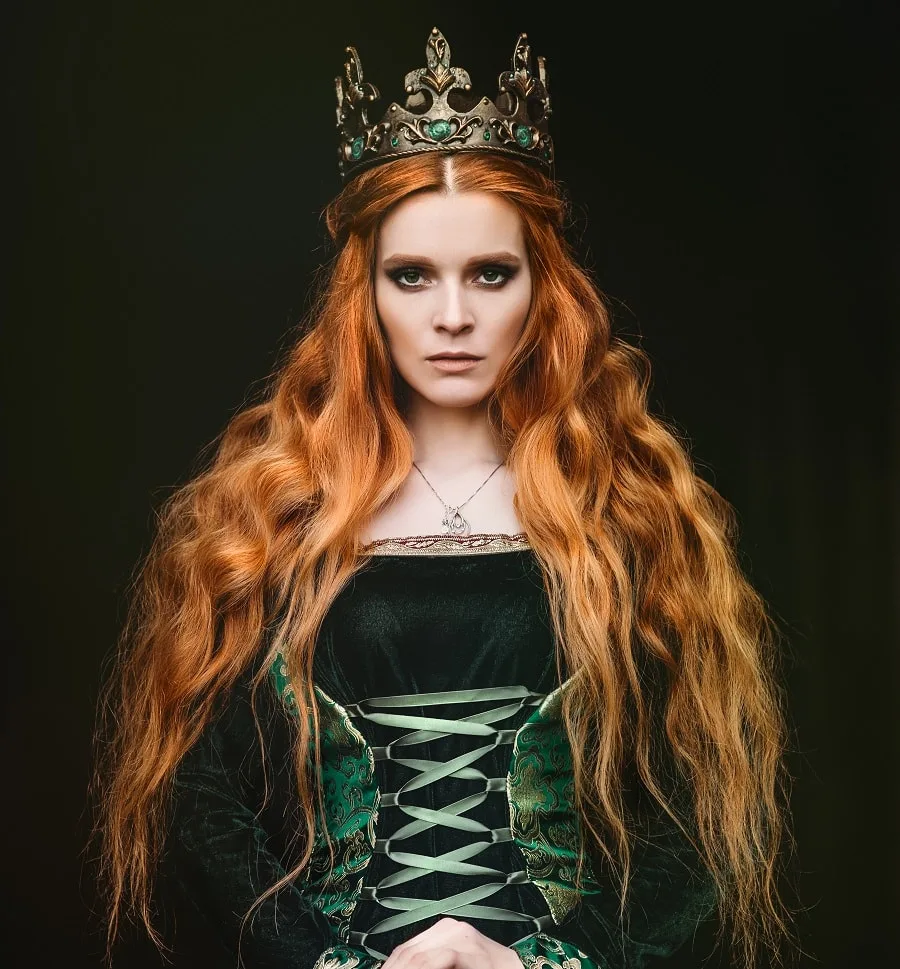
During the early Middle Ages, before the Catholic Church rose to prominence around 400 CE, women often wore long and loose hair but covered it with a mantle except for a few curls at the forehead.
Men had more freedom, often wearing long hair curled at the shoulders or cropped into a bowl cut. Much of the art at this time also shows them with mustaches but no beards.
12th Century
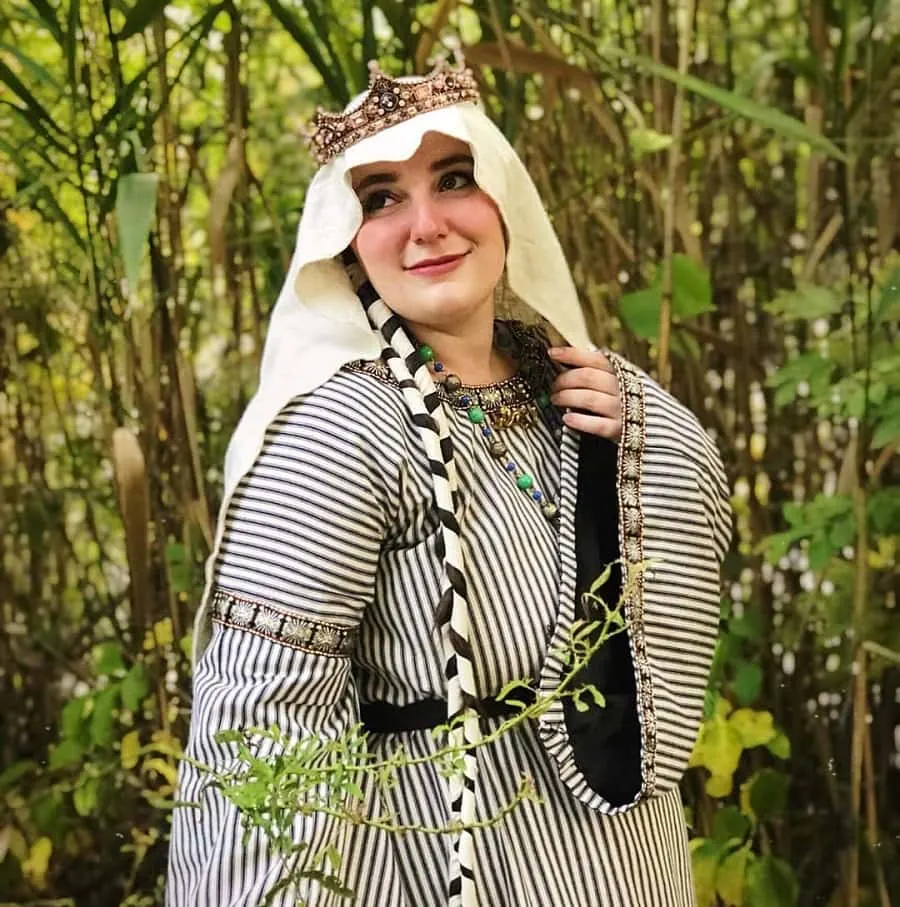
By the 12th Century, women began to reveal more of their hair, with the nobility adorning it with luxurious golden ribbons, dried flowers, and elaborate knots. They would also wear wreaths or circlets on the forehead.
However, by the end of the century, they began wearing large cloth hair coverings called wimples. They hid the hair and the entire neck up to the chin. These modest hairdressings stayed in fashion for nearly 200 years.
13th-15th Centuries
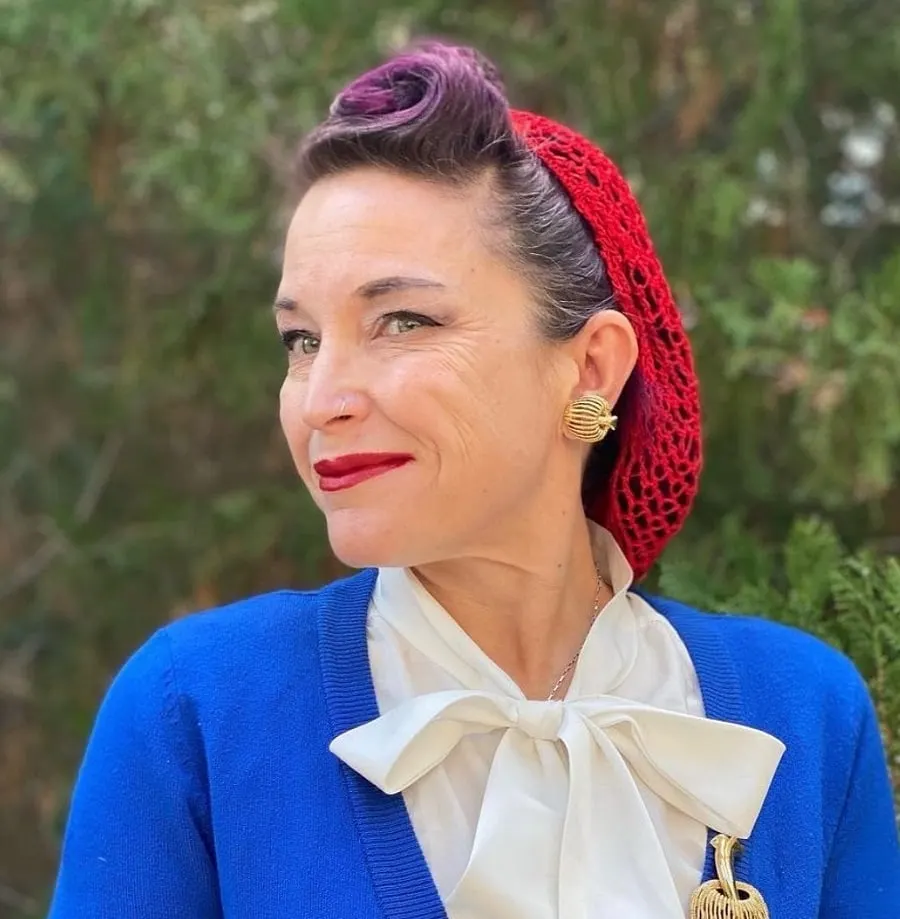
Between the 13th and 15th centuries, snoods or crespines became popular. Ladies would braid and twist their hair into two buns on the sides of their heads, then use the net to hold it in place. They would wear a circlet to keep their hairline hidden.
During this time, nobility wore large, elaborate headdresses made from a fabric-covered metal structure covered in jewels. They were shaped into dramatic silhouettes like hearts, horns, and even butterflies. The women would plait their hair tightly underneath to keep it hidden away.
What Haircut Was Considered Attractive in Medieval Times?
Attractive medieval haircuts typically came from the nobility.
It was widespread practice for the male subjects of long-haired kings to grow their locks out, then cut them off again when a short-haired king took the throne.
Medieval people believed that high, bald foreheads were more attractive for women, as it was a sign of youthfulness, good breeding, and intelligence. Women would pluck back their hairlines and shave off their eyebrows to achieve this look.
Types of Medieval Hairstyles
Medieval hairstyles ranged from simple to highly elaborate, depending on the church’s current stance.
In some cases, using overly fancy adornments was “sinful” and seen as a sign of vanity, but these rules were sometimes relaxed. That allowed for more fashionable medieval haircuts to emerge.
Braids
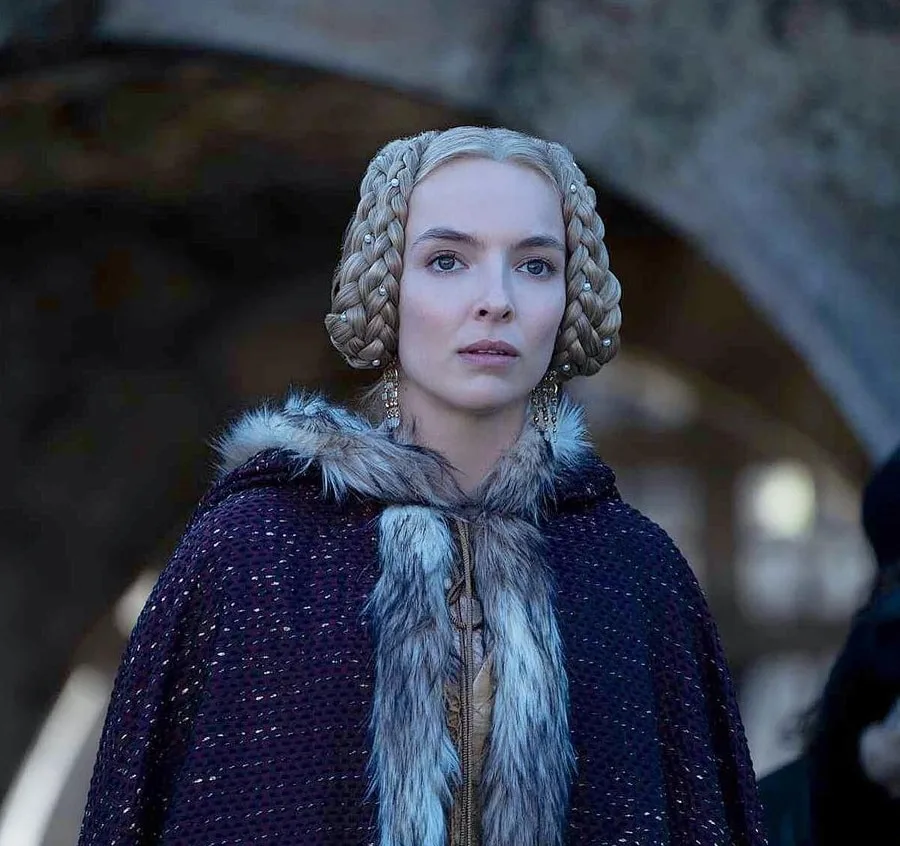
For women of all social classes, braids were the most popular hairstyle.
Noble women would use golden ribbons to thread through the plaits and add fake extensions to make their braids appear thicker and longer.
Young peasant girls often looped their braids under their ears or crisscrossed them over their foreheads with a sleek middle part.
Page Cut
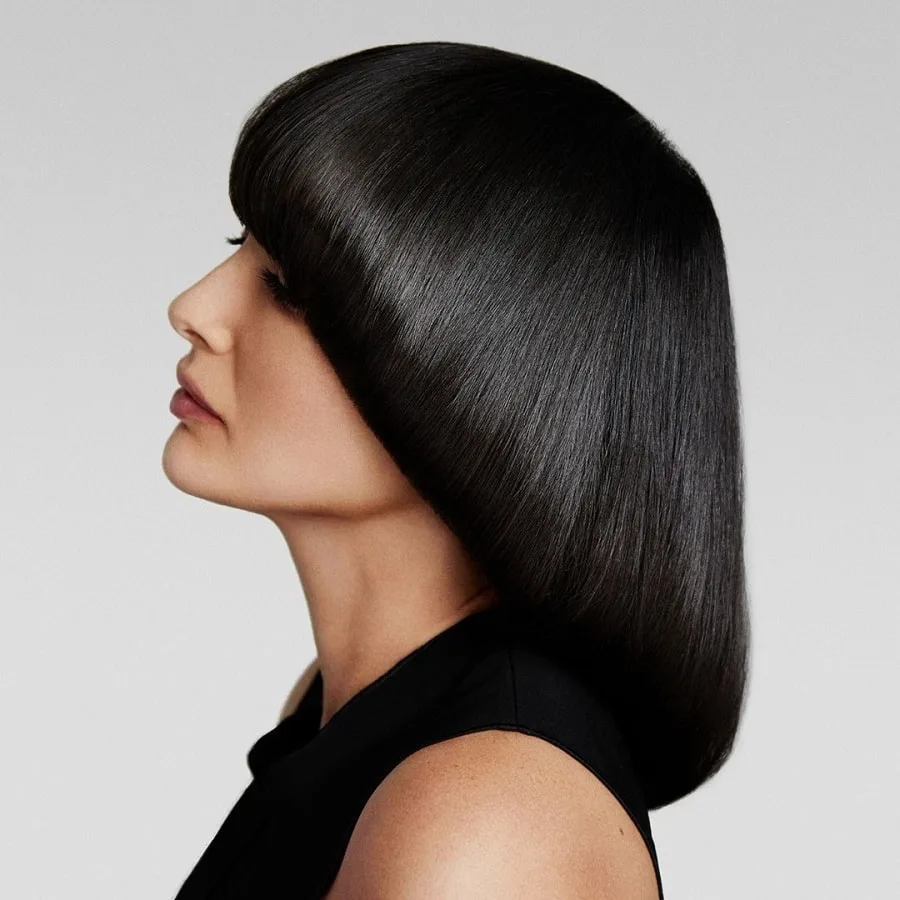
The pageboy cut started as a medieval hairstyle, as it was popular for these young knights’ assistants to cut their hair into a shaggy bowl cut that went past the ears. They would often include a thick, heavy fringe.
Tonsures

When the clergy dedicated themselves to the monastery or convent, they symbolically turned from a life of frivolity and fashion by removing most of their hair, a process called tonsuring.
Monks would shave all but a single strip of hair that would wrap around the entire width of their heads. The crown of their head was completely bald, and the tonsure was typically cropped above the ears.
Similarly, nuns would cut all of their hair nearly to the scalp and cover any remaining tresses with a long veil that hid their foreheads.
Knights
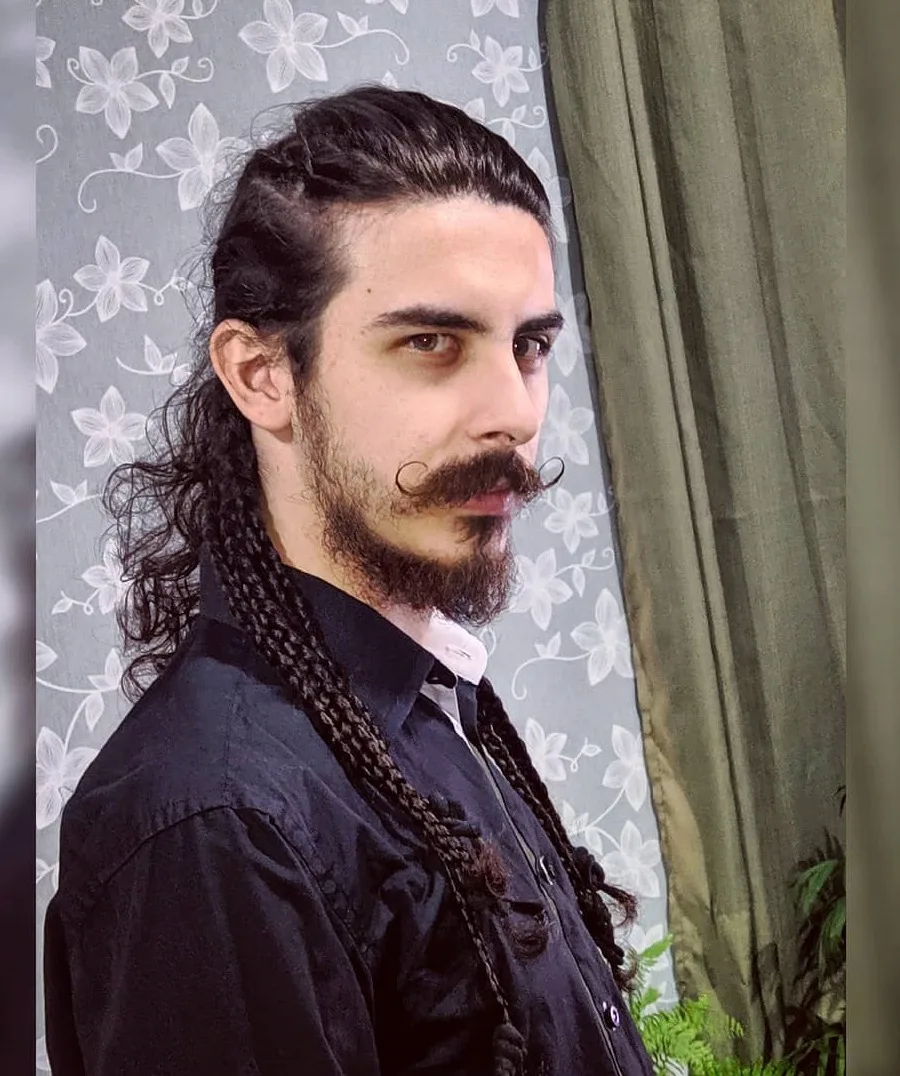
The chivalrous knights preferred to wear their hair at the shoulders, but it served a more practical purpose than a fashionable one.
Their hair would provide an extra layer of cushioning between the heavy helmets at the backs of their necks, making them more comfortable and less prone to pinching.
Bowl Cut
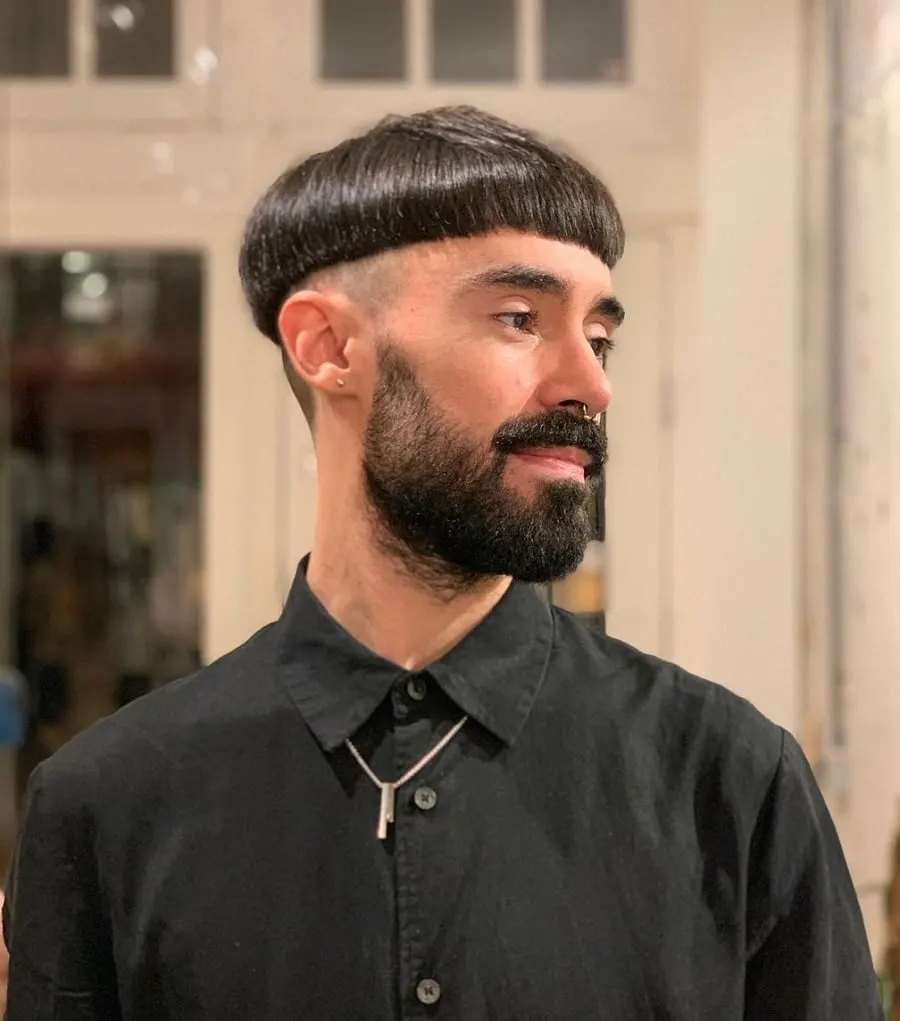
The bowl cut was one of the most famous medieval haircuts for men. It consisted of a blunt, straight length around the head as if the barber placed a bowl on their heads and trimmed any hair that hung below the rim.
Men of all social statuses and ages would sport this style, especially soldiers and knights, during times of war.
How Did Men & Women Cut and Style Their Hair in Medieval Era?
In medieval era, they used early hairdressing tools like spring scissors and bone combs to cut and style their hair.
Because modern plumbing didn’t exist yet, hair washing only happened occasionally, so combs were dual-sided to help alleviate grease build-up.
One side had wide teeth to unsnarl knots, while the other had much finer teeth to disperse natural scalp oils evenly. When they did wash their hair, people used lye made from ash and herbs, then rinsed it with vinegar.
They also relied on many different plants and homemade tonics, which they thought had unique properties that would enhance their tresses and alleviate problems like itching, lice, and hair thinning.
A few examples include:
- Aloe vera for hair loss
- Willow leaves for dandruff
- Grease from a cooked pig and broom tree branches for lice
- Dried rose petals, nutmeg, clove, rose water, and lilies for foul odors
- Egg whites for shine and to hold the hair in place
- Alum, pomegranate peel, and apples for softness
Why Did Medieval People Have Long Hair?
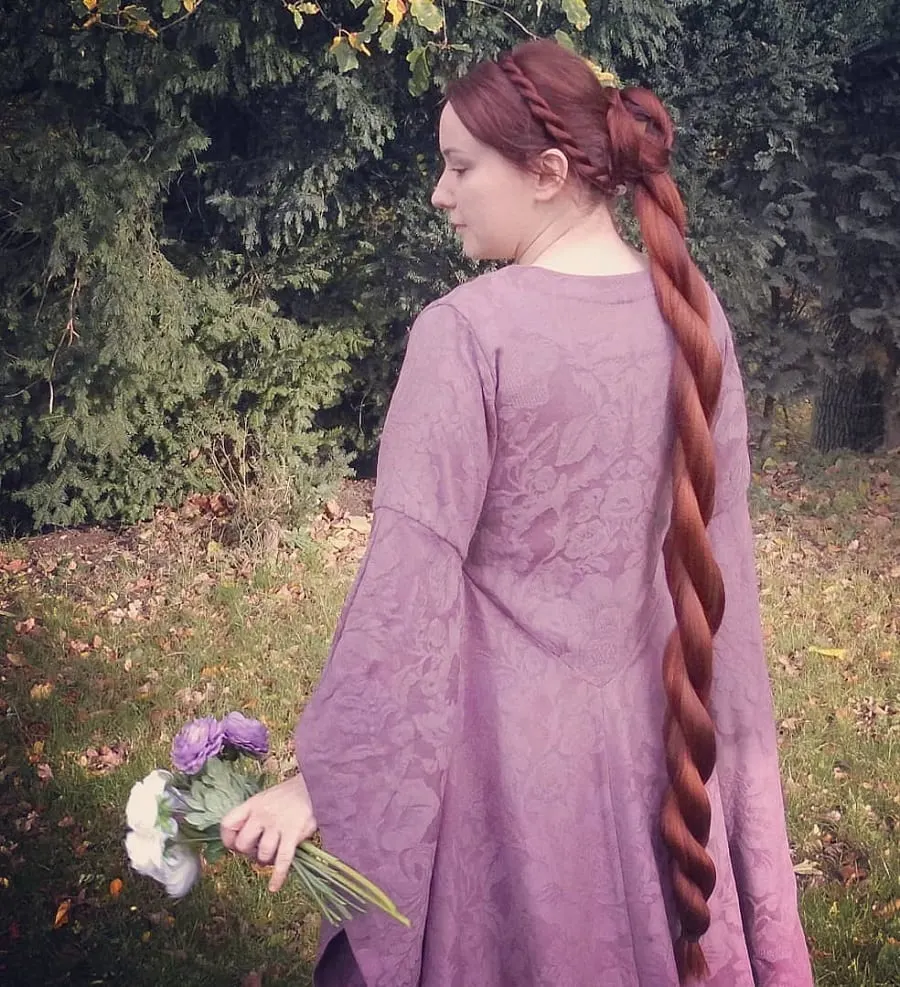
Medieval people had long hair because it was considered a symbol of power, wealth, and luxury.
Servants and peasants, who spent their days toiling away in the fields or handling trades equipment, required shorter cuts as they were more practical than battling with longer tresses getting in the way of their work.
As such, long hair was a sign that the person didn’t have to worry about such things and could grow their locks long without worrying about keeping it clean and out of the way.
Were Bangs Popular in The Middle Ages?
Bangs were very unpopular with women, who would pluck or shave the hair along the edges of their foreheads.
However, many medieval haircuts for men included a blunt, heavy fringe, such as the monk’s tonsure, pageboy cuts, and bowl cuts.
Did People Dye Their Hair in Medieval Times?
People did use dye, though they didn’t have the luxury of stopping by a beauty supply store for everything they needed for some fabulous medieval hairstyles.
According to a treatise called “De Ornatu Mulierum” written by Trotula de Ruggiero in the 11th Century, there were recipes for concocting homemade hair dye blends from plants. They could achieve blonde with boxwood extracts, saffron or myrtle berry for golden, and black henbane for a dark brunette.
Summary
- In the Early Middle Ages, women typically wore their hair long and loose, covered with a mantle except for a few curls at the forehead, while men wore long hair curled at the shoulders or in a bowl cut.
- By the 12th Century, women began adorning their hair with luxurious golden ribbons, dried flowers, and elaborate knots, though by the end of the century, large cloth hair coverings called wimples came into fashion.
- Between the 13th and 15th centuries, snoods or crespines became popular. Women would also plait their hair tightly underneath elaborate headdresses.
- High, bald foreheads were considered attractive for women as it signaled youthfulness, good breeding, and intelligence.
- Medieval hairstyles ranged from simple to elaborate, depending on the church’s stance on vanity. Braids were popular for women across all social classes.
- The pageboy cut and tonsures were common medieval hairstyles, with tonsures being a symbolic act of turning from frivolity for clergy members.
- Knights wore their hair at shoulder length as an extra cushioning for heavy helmets, while the bowl cut was common among men, especially soldiers and knights during war times.
- Medieval people used spring scissors and bone combs to style their hair, and lye made from ash and herbs was used to wash hair, which was rinsed with vinegar.
- Long hair was considered a symbol of power, wealth, and luxury, while bangs were unpopular among women.
- People did use plant-based dye for their hair in Medieval times according to the 11th-century treatise De Ornatu Mulierum by Trotula de Ruggiero.
These herbal hair treatments were almost exclusive to women’s medieval haircuts. However, there is a historical record of men adopting the practice to celebrate special occasions or coordinate with their chosen outfits.
